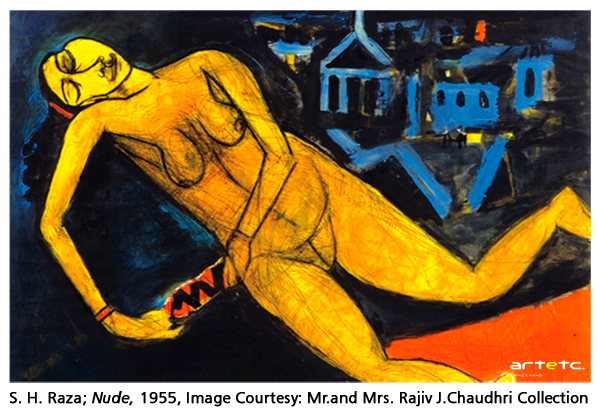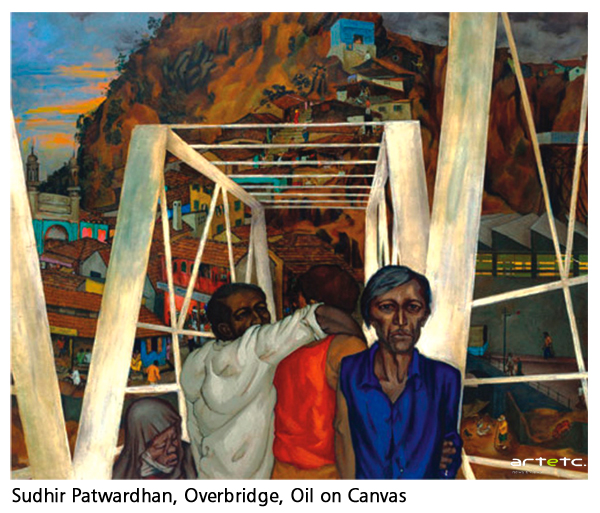- Publisher’s Note
- Editorial
- Progressive Artists Group of Bombay: An Overview
- S. H. Raza: The Modern
- Ara: The Uncommon Commoner
- Art of Francis Newton Souza:A Study in Psycho-Analytical Approach
- M.F. Husain: An Iconoclastic Icon
- Husain’s ‘Zameen’
- Life and Art of Sadanand Bakre
- Hari Ambadas Gade: Relocating the Silent Alleys
- Mysticism Yearning for the Absolute
- Modernist Art from India at Rubin Museum of Art, New York
- Traditional Art from India at the Peabody Essex Museum
- Nandan Mela 2011: A Fair with Flair
- India's First Online Auction of Antiquities
- The Market Masters
- Markets May Plunge and the Rich May Flock To Art
- What Happened and What's Forthcoming
- Random Strokes
- Julian Beever: Morphing Reality With Chalk Asthetics
- Eyes on Life: Reviewing Satish Gujral’s Recent Drawings
- Exploring Intimacy: Postcards of Nandalal Bose
- Irony as Form
- Strange Paradise
- Eyeball Massage: Pipilotti Rist
- René Lalique: A Genius of French Decorative Art
- The Milwaukee Art Museum – Poetry in Motion
- 9 Bäumleingasse
- Art Events Kolkata: November – December 2011
- Art Bengaluru
- Mumbai Art Sighting
- Delhi Dais
- Tacita Dean at Turbine Hall, Tate Modern, London
- Preview: January, 2012 – February, 2012
- In the News: December 2011
ART news & views
Modernist Art from India at Rubin Museum of Art, New York
Issue No: 24 Month: 1 Year: 2012
Report
 New York. Beth Citron, Assistant Curator of the Rubin Museum of Art said that the idea for the Modernist Art from India series began with an interest at the Rubin Museum to expand the geographic scope of its exhibitions, introduce a broader range of thematic exhibitions, and reinforce its commitment to modern and contemporary art. Body Unbound was the first of the three exhibitions on Modern Indian art and it provided a comprehensive exploration of a socially and politically turbulent era for the Indian nation. The Body Unbound which started on November 18, 2011 and continues till April 9, 2012 celebrates the artistically productive dialogue between tradition and innovation, by tracing the development of Indian modernism. There are 23 artists in the first exhibition alone, and one of the objective is to show the wide range of diversity among artists working in India after Independence.
New York. Beth Citron, Assistant Curator of the Rubin Museum of Art said that the idea for the Modernist Art from India series began with an interest at the Rubin Museum to expand the geographic scope of its exhibitions, introduce a broader range of thematic exhibitions, and reinforce its commitment to modern and contemporary art. Body Unbound was the first of the three exhibitions on Modern Indian art and it provided a comprehensive exploration of a socially and politically turbulent era for the Indian nation. The Body Unbound which started on November 18, 2011 and continues till April 9, 2012 celebrates the artistically productive dialogue between tradition and innovation, by tracing the development of Indian modernism. There are 23 artists in the first exhibition alone, and one of the objective is to show the wide range of diversity among artists working in India after Independence.
Modernist Art from India: Body Unbound offers a unique opportunity to present several sides of modern Indian art and build broader and escalating interest in the field over several years. The show focuses on representations of the figure and the body in modernist art from India after that nation's independence in 1947.
The works on display, collected from local private and institutional collections, explore the relationship between traditionally Indian, realistic depictions of the human form and the growing influence of abstraction. The exhibit includes works from the early 1940s - mid 1980s.

The museum presents works of a number of India's most influential painters of this era and includes select examples of Progressive Artists Group-era works by M.F. Husain, F.N. Souza, and others. It then turns to the representation of metaphysical Man by Tyeb Mehta and Akbar Padamsee, and the beginnings of narrative figuration through the work of Sudhir Patwardhan, Nalini Malani, B.Prabha, Gieve Patel, and Bhupen Khakhar. Photographs by Richard Bartholomew at the conclusion of the exhibition portray the artists in the exhibition, and also give audiences a sense of the context in which the exhibition's paintings were developed.